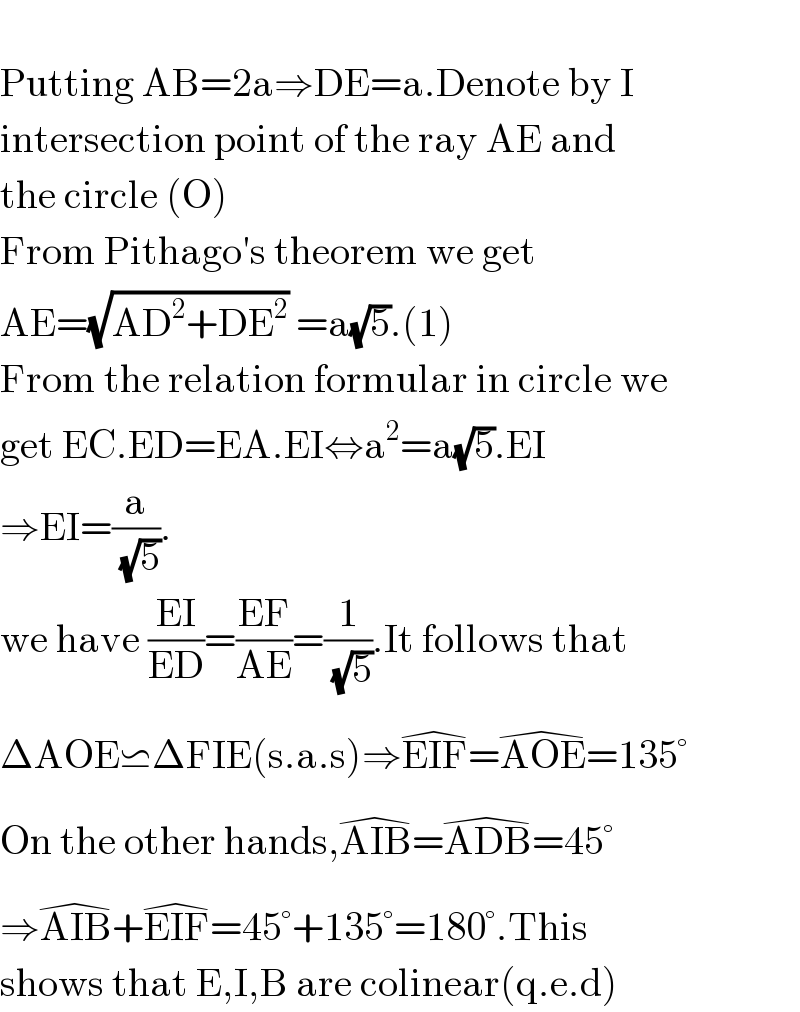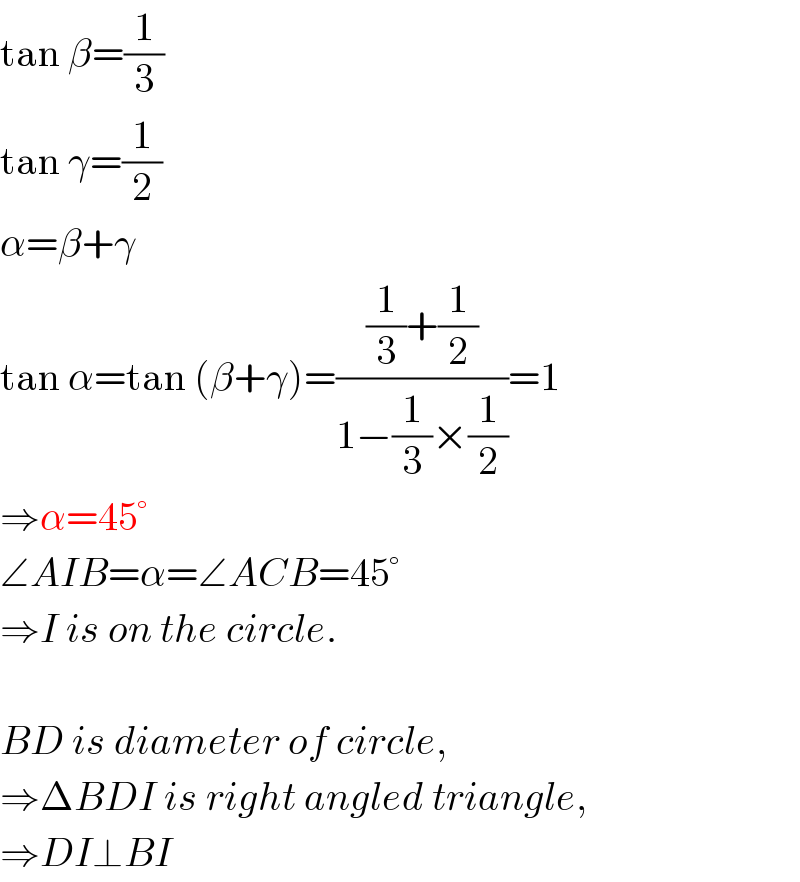
Question and Answers Forum
Question Number 104998 by mathocean1 last updated on 25/Jul/20

Commented by mathocean1 last updated on 25/Jul/20

Commented by ajfour last updated on 25/Jul/20

Answered by 1549442205PVT last updated on 25/Jul/20

Commented by 1549442205PVT last updated on 25/Jul/20

Commented by mathocean1 last updated on 25/Jul/20

Answered by mr W last updated on 25/Jul/20

Commented by mr W last updated on 25/Jul/20

